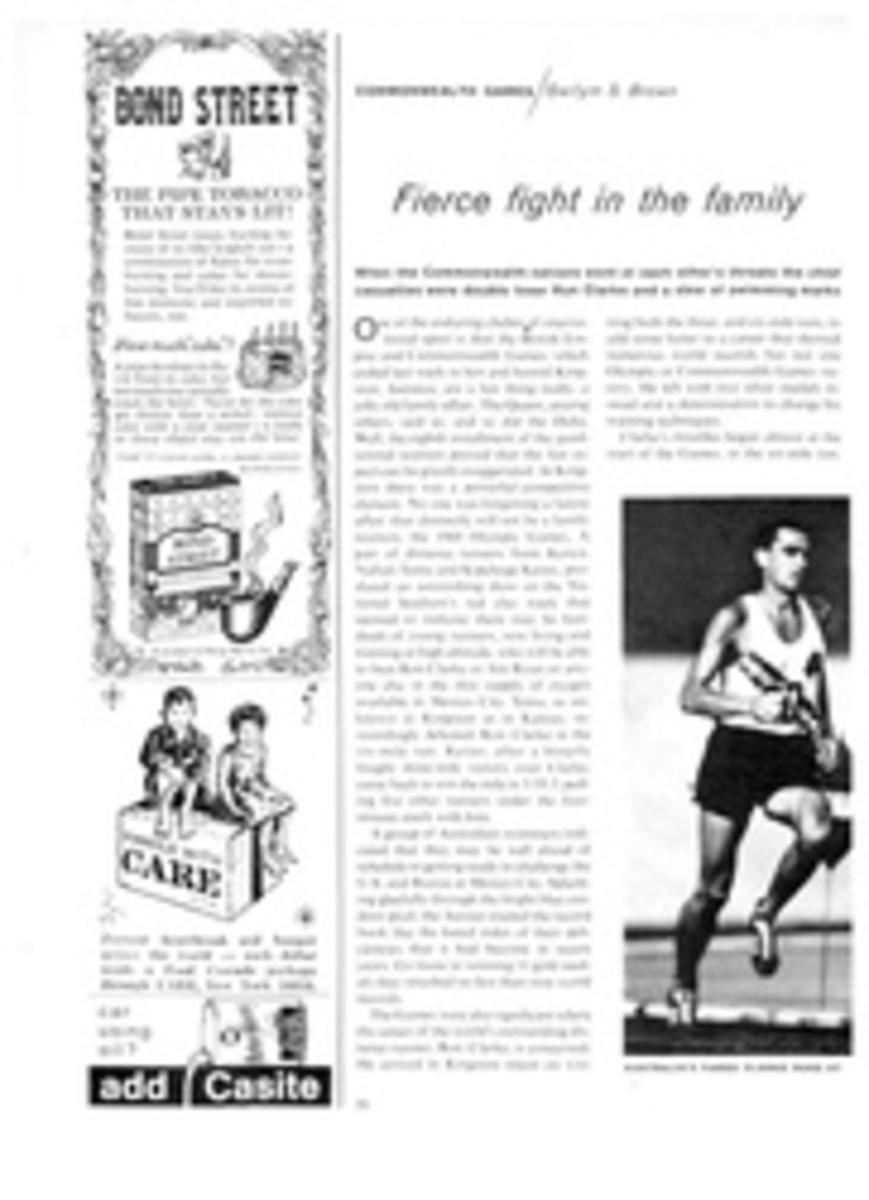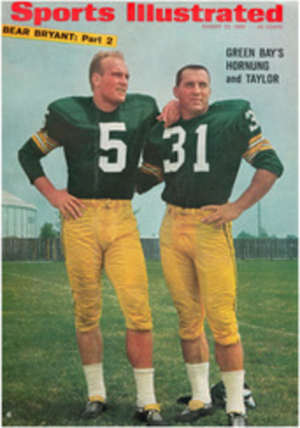
Knobby-legs becomes a star
Back in 1964 Pat Di Gennaro bought three yearling trotters. The first cost $54,000, won $700 on the race track and was discreetly retired to a farm. His second purchase ($9,000) contracted a bizarre virus and is apparently still suffering from tired blood. The third colt ($7,000) won a race at least but didn't look like much. In fact, he never looked like much. His legs were as bumpy as a pine tree, but Di Gennaro, being a lumberman, knows a thing or two about pines, and he thought he knew something about bumps. Before buying the colt, he took the precaution of finding a partner. "He put up half the money," Di Gennaro says, "and he took half the gamble."
Last week the gamble paid off. The knobby-legged youngster, who was grandly named Polaris, clip-clopped off with the $123,015 Yonkers Futurity and immediately became the favorite to win The Hambletonian, harness racing's most prestigious event. It is ironic that a colt who had bony growths on his legs even before he put a head in harness is now the soundest, toughest 3-year-old around. Quite possibly these qualities, not his speed, will win Polaris the nation's top trotting prize.
Polaris may be a star in name but he has not, in truth, been one on the track. He is a steady, solid colt that Trainer George Sholty described not long ago as "a nice horse that follows along, stays on the trot and gets a little money." In the last two months, however, the colt has improved, and last week Pat Di Gennaro turned down $200,000 for him. "I want $350,000," he told Stanley Dancer, who made the bid. "There isn't a top trotter around this year so my horse has a lot more value. He might not have been worth $350,000 last year or be worth that much next year, but this year he is."
It is significant that several weeks before Dancer offered $200,000 for the Hambletonian favorite, he tried, unsuccessfully, to buy the country's best 3-year-old pacer, Romeo Hanover; that time he bid $1.5 million. Polaris has won eight of 28 races, Romeo 22 of 26.
Polaris may not compare well with Romeo, but his record this year (six wins in 15 starts) was a good bit better than that of the other trotters in the Futurity field. Kerry Way, the pretty, gay-going filly who was the 2-year-old champion, had managed to win only one race in four starts. Carlisle, the 8-to-5 second favorite in the Futurity (Polaris went off at 7-to-5) had won one in 10. And Governor Armbro, the fastest as a 2-year-old, had an 0-for-8 record.
The four others in the stake were in it for glamour and whatever gold they might get. The Futurity, after all, is the first race of trotting's Triple Crown and that makes it something special for owners like 54-year-old Marie Gentile, who runs a drugstore in Fairfield, Conn., and pretty Beverly Kristel, a Long Island housewife who bought her trotter simply because the filly had four white feet. Mrs. Gentile's colt, it turned out, finished sixth in the race and won $3,690. And although Mrs. Kristel was not delighted when her trotter put a pink nose on the finish line seventh, she was not really discouraged. "Our next stop is The Hambletonian," she said quite happily. It is a year to be optimistic.
The Hambletonian horses are well-matched, and almost any one of them can win at any time. They may lack quality, but this promises to be a season of weekly scraps and real excitement. Post position, the pinch of a boot, the weight of a shoe have become significant factors in the outcome of every race.
In the Futurity, Polaris drew the No. 7 post. "That will certainly affect our chances," George Sholty said. "It has a bearing on me mentally, if nothing else. With a top horse like Speedy Scot, you can make any racetrack or any post position work for you. You can go just about anywhere and look equally good. But when colts are as even in ability as these, if you make one wrong move you look bad."
Billy Haughton, who drove Carlisle out of No. 6, said, "I don't think the post position will handicap George very much. Polaris is a handy horse, and he can get away from there. George is a lot surer with his colt than I feel with mine." What bothered Billy most was Carlisle's habit of breaking gait. Once the colt reached the lead he would invariably go into a gallop. Haughton spent the spring and summer trying to figure out what was wrong. He gave the colt more work. That did not help. Then he fiddled with the lead weights that Carlisle wears on his hooves. Haughton balanced and rebalanced them. In July he attached small barbells—14-ounce weights—to each foot. Finally the colt leveled out and stayed on the trot. Carlisle beat Polaris two weeks before the Futurity, but with the added weight he seemed to lose some of his speed.
Governor Armbro had also been jumping, making breaks in three of his last four races. Driver Joe O'Brien declared none of them were the colt's fault. He said the breaks were caused by bad luck and never mind that rumor around the racetrack that the colt was sore. ("He must be sore," Sholty had said. "He can't have raced so badly.")
Kerry Way had a seemingly unexplainable and unexcusable record, too. The fact was she had not been trained hard for any of her previous races. "I haven't been trying to get her too tight," said old master trainer Frank Ervin. "The race she has to be tight for is The Hambletonian." Furthermore, the filly's training schedule had been delayed when she got an infection in a leg from the dye on her new trotting boots. Last Thursday she donned her old boots when she stepped out to meet the boys. Galoshes might have been more appropriate.
Severe thunderstorms drenched the race course for an hour and a half before the Futurity, but on rock-hard harness tracks mud seldom makes a difference in performance. It may possibly have affected Carlisle, making his hooves even heavier than usual, but Haughton said he had raced well in the mud as a 2-year-old.
At the start of the Futurity, Carlisle barreled to the front. Sholty sent Polaris after him, and by the time they had gone a quarter of a mile Polaris had the lead on the outside. Haughton tucked Carlisle in along the rail in second place. Kerry Way and Governor Armbro were far back. Polaris went to the half in 1:02[1/5]. Joe O'Brien pulled Governor Armbro out to make his move at the three-quarter pole.
As the field trotted into the final turn, Polaris still had the lead and Carlisle was still a length or so behind. Suddenly Haughton's horse threw a shoe. It careened into the infield, and the colt immediately began to pace, not trot. His race was over. At the top of the stretch Governor Armbro moved into second and Kerry Way rushed from sixth to third. Polaris just kept trotting. They never got near him. He won by two and a half lengths in 2:06.
George Sholty was jubilant. "See you at The Hambletonian," he told anyone that shook his hand. Joe O'Brien and Frank Ervin came off the track smiling broadly, too. Their horses had put in their best races in months, and The Hambletonian, at Du Quoin, Ill., was still three weeks off. Come to think of it, they also were telling people, "See you at The Hambletonian."
PHOTO
DRIVER SHOLTY HAS AN IMPROVING COLT

